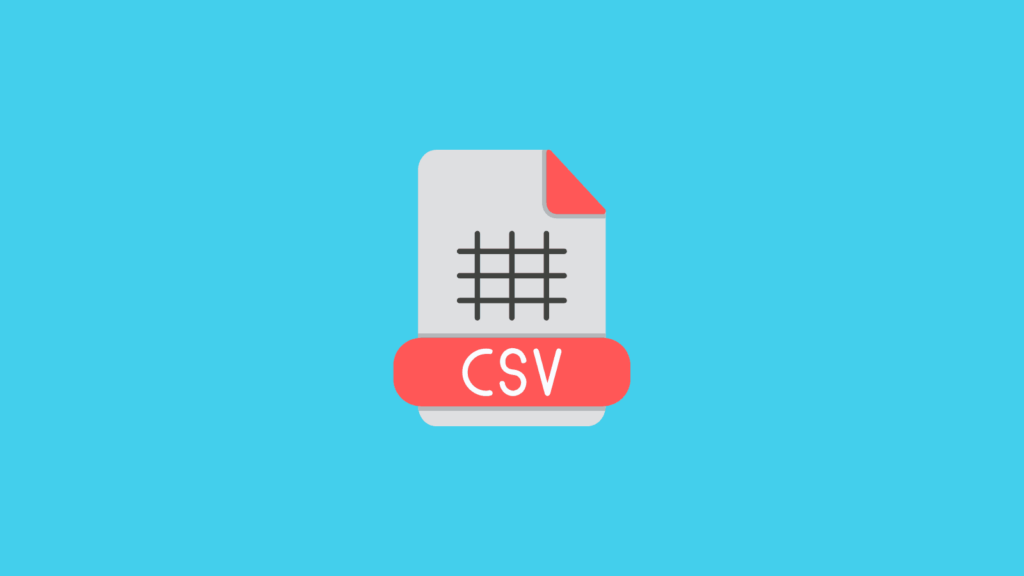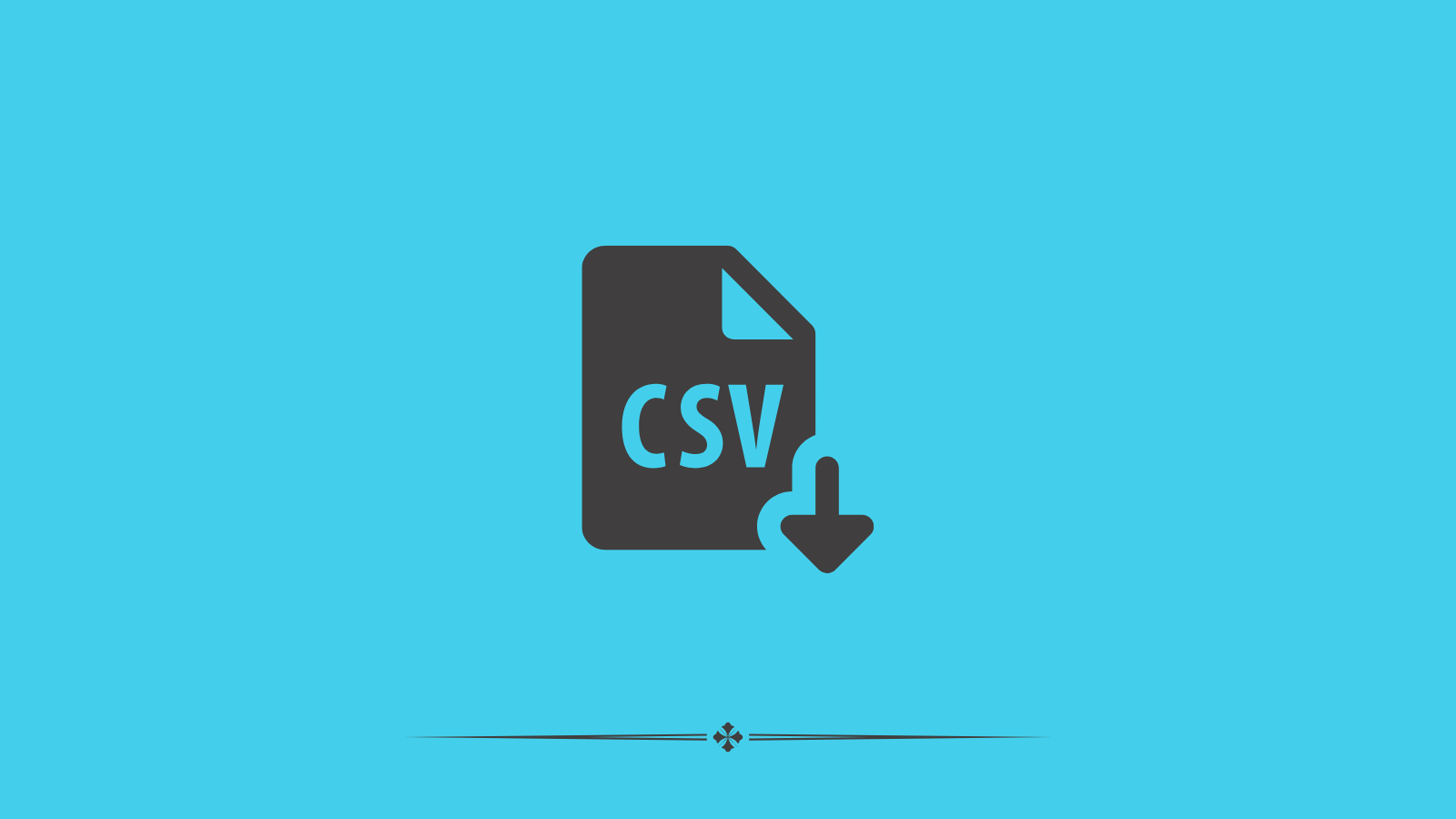Best Processing Tips When Working with Large CSV Files in C#
Working with large CSV files in C# can be made more manageable by implementing the right processing techniques. Learn more in this article.

Working with large CSV files in C# can be challenging, but with the right processing techniques, you can efficiently handle and manipulate the data. In this article, we will explore some of the best tips to optimize your CSV file processing in C# to ensure smooth execution and improved performance.
Use the Appropriate CSV Parsing Library

Choosing the right C# CSV parser is crucial when working with large files. Libraries such as CsvHelper, FileHelpers, and TextFieldParser provide efficient ways to read and parse CSV files in C#. These libraries offer features like lazy loading, automatic mapping, and efficient memory management, which significantly improve processing speed and memory usage.
Implement Batch Processing
When dealing with large CSV files, processing the entire file at once can lead to memory issues. Instead, consider implementing batch processing, where you divide the file into smaller chunks or batches and process them individually. This approach helps in minimizing memory consumption and allows for faster processing. By efficiently managing the memory and processing smaller portions of data, you can reduce the overall processing time and enhance the performance of your application.
Optimize Memory Usage
Large CSV files can consume a significant amount of memory when loaded into memory. To optimize memory usage, you can utilize techniques such as streaming, where you read and process the file line by line instead of loading the entire file into memory. Another approach is to use memory-mapped files that allow direct access to file data without the need to load it entirely into memory. By adopting these techniques, you can effectively handle large CSV files without overwhelming your application’s memory resources.
Leverage Parallel Processing
Parallel processing is a powerful technique to improve performance when dealing with large CSV files. By dividing the processing tasks among multiple threads or processes, you can take advantage of multi-core processors and speed up the execution. C# provides various mechanisms for parallel processing, such as the Task Parallel Library (TPL) and Parallel LINQ (PLINQ). These frameworks enable you to parallelize operations like reading, parsing, filtering, or aggregating data from CSV files, leading to significant performance gains.
Apply Data Filtering and Projection
Large CSV files often contain more data than required for a particular task. By applying data filtering and projection techniques, you can extract only the necessary data, reducing processing time and improving performance. Consider using LINQ queries to filter and project data based on specific criteria. This approach helps in processing a subset of the CSV file, minimizing the computational effort and allowing your application to perform optimally, especially when dealing with massive datasets.
Optimize File Writing and Memory Management
When processing large CSV files, you may need to generate new output files or update the existing ones. To optimize file writing, use buffered writing techniques, where you write data in chunks rather than individual rows. This approach reduces disk I/O operations, resulting in faster file generation. Additionally, ensure proper memory management by disposing of objects and freeing resources promptly. Improper memory management can lead to memory leaks and degrade performance over time.
Conclusion
Working with large CSV files in C# can be made more manageable by implementing the right processing techniques. By leveraging the appropriate parsing library, implementing batch processing, optimizing memory usage, leveraging parallel processing, applying data filtering and projection, and optimizing file writing and memory management, you can ensure the efficient handling of large CSV files and improve the overall performance of your application.
Choosing the right C# CSV parser is crucial when working with large files. Libraries such as CsvHelper, FileHelpers, and TextFieldParser provide efficient ways to read and parse CSV files in C#. These libraries offer features like lazy loading, automatic mapping, and efficient memory management, which significantly improve processing speed and memory usage.
Implement Batch Processing
When dealing with large CSV files, processing the entire file at once can lead to memory issues. Instead, consider implementing batch processing, where you divide the file into smaller chunks or batches and process them individually. This approach helps in minimizing memory consumption and allows for faster processing. By efficiently managing the memory and processing smaller portions of data, you can reduce the overall processing time and enhance the performance of your application.
Optimize Memory Usage
Large CSV files can consume a significant amount of memory when loaded into memory. To optimize memory usage, you can utilize techniques such as streaming, where you read and process the file line by line instead of loading the entire file into memory. Another approach is to use memory-mapped files that allow direct access to file data without the need to load it entirely into memory. By adopting these techniques, you can effectively handle large CSV files without overwhelming your application’s memory resources.
Leverage Parallel Processing
Parallel processing is a powerful technique to improve performance when dealing with large CSV files. By dividing the processing tasks among multiple threads or processes, you can take advantage of multi-core processors and speed up the execution. C# provides various mechanisms for parallel processing, such as the Task Parallel Library (TPL) and Parallel LINQ (PLINQ). These frameworks enable you to parallelize operations like reading, parsing, filtering, or aggregating data from CSV files, leading to significant performance gains.
Apply Data Filtering and Projection
Large CSV files often contain more data than required for a particular task. By applying data filtering and projection techniques, you can extract only the necessary data, reducing processing time and improving performance. Consider using LINQ queries to filter and project data based on specific criteria. This approach helps in processing a subset of the CSV file, minimizing the computational effort and allowing your application to perform optimally, especially when dealing with massive datasets.
Optimize File Writing and Memory Management
When processing large CSV files, you may need to generate new output files or update the existing ones. To optimize file writing, use buffered writing techniques, where you write data in chunks rather than individual rows. This approach reduces disk I/O operations, resulting in faster file generation. Additionally, ensure proper memory management by disposing of objects and freeing resources promptly. Improper memory management can lead to memory leaks and degrade performance over time.
What are CSV Files

CSV files, short for Comma-Separated Values files, are plain text files used to store tabular data, such as numbers and text, in a simple, structured format. Each row in the CSV file represents a data record, and each record consists of one or more fields separated by commas. CSV files are commonly used for data exchange between applications because they are lightweight, human-readable, and supported by a wide variety of software tools, including spreadsheets, databases, and programming languages.
Key Features of CSV Files:
- Plain Text Format: CSV files are plain text, meaning they are easy to read and edit using any text editor.
- Comma-Separated: Data fields are separated by commas, though other delimiters like semicolons, tabs, or spaces can also be used (in which case, the file may have different extensions like
.txt). - Rows and Columns: Each line in a CSV file corresponds to a row of data, and the data fields separated by commas represent the columns.
- No Formatting: Unlike spreadsheet formats (such as Excel), CSV files do not support data formatting (like bold text or cell colors) or complex data structures (like formulas or images). They contain only raw data.
- Portable and Cross-Platform: CSV files can be used across different operating systems and software, making them highly versatile.
Example of a CSV File:
A CSV file that contains information about employees might look like this:

In this example:
- The first row contains the column headers: “Name”, “Age”, “Department”, and “Salary.”
- Each subsequent row represents a data record for an employee.
Common Uses of CSV Files:
- Data Import/Export: CSV files are commonly used to import or export data between databases, spreadsheets (like Excel), and other software applications.
- Data Storage: For storing simple datasets, CSV is a lightweight and efficient format.
- Interoperability: CSV files are used for transferring data between different systems, such as migrating data from one application to another.
- Data Analysis: Many data analysis tools, such as Python’s Pandas or R, can easily read and process CSV files.
How to Open and Edit CSV Files:
- Spreadsheet Applications: You can open and edit CSV files in spreadsheet programs like Microsoft Excel, Google Sheets, or LibreOffice Calc. The data is displayed in a table format, where each cell corresponds to a field.
- Text Editors: You can open CSV files in any plain text editor, such as Notepad (Windows) or TextEdit (macOS). This will display the file in its raw format, with commas separating the values.
Limitations of CSV Files:
- Lack of Structure: CSV files can only store flat data (one-dimensional tables) and don’t support hierarchical or relational data.
- No Data Types: CSV files do not enforce data types, so all data is treated as plain text. When imported into other programs, data types need to be assigned manually.
- Issues with Special Characters: If the data contains commas, newline characters, or quotes, special handling is required to properly escape these characters (e.g., by enclosing fields in double quotes).
CSV files are simple yet powerful for storing and sharing structured data, making them widely used in business, research, and web development.
Conclusion
Working with large CSV files in C# can be made more manageable by implementing the right processing techniques. By leveraging the appropriate parsing library, implementing batch processing, optimizing memory usage, leveraging parallel processing, applying data filtering and projection, and optimizing file writing and memory management, you can ensure the efficient handling of large CSV files and improve the overall performance of your application.
FAQ
Q: What are the challenges of working with large CSV files in C#?
- The main challenges include handling large memory usage, ensuring efficient processing without slowing down the system, and dealing with potential data inconsistencies or format issues in large CSV files.
Q: How can I efficiently read large CSV files in C#?
- To efficiently read large CSV files, consider using a buffered approach with
StreamReader. This reads the file line-by-line, reducing memory usage compared to loading the entire file into memory.
Q: What is the best way to handle memory management when processing large CSV files?
- For optimal memory management, use streaming techniques to process data in chunks rather than loading the entire file into memory. Additionally, regularly free up memory by disposing of objects that are no longer needed.
Q: Can parallel processing be used for large CSV files in C#?
- Yes, parallel processing can be used. You can use Parallel LINQ (PLINQ) or async-await patterns to process different parts of the file simultaneously, speeding up the processing time.
Q: Should I use a third-party library for handling large CSV files in C#?
- Using a third-party library like CsvHelper can be beneficial as these libraries are optimized for CSV processing, offering efficient parsing and handling of large files with less code.
Q: How can I ensure the integrity of data when processing large CSV files?
- To ensure data integrity, implement checks for data consistency and correctness during the processing stage. Consider using try-catch blocks to handle exceptions and validate data formats.
Q: What are the best practices for writing processed data from a large CSV file?
- When writing processed data, use buffered writing or batch processing to minimize IO operations. Ensure that the writing process doesn’t block the reading process if they occur concurrently.
Q: How can I optimize the parsing of CSV data in C#?
- Optimize parsing by using efficient string manipulation methods and avoiding unnecessary operations. Regular expressions, if not used carefully, can be slow, so consider simpler string methods where appropriate.
Q: Is it a good practice to split a large CSV file into smaller files?
- Splitting a large CSV file into smaller files can be a good practice, especially if it simplifies processing and fits the available memory better. It also allows for parallel processing of these smaller files.
Q: How do I handle encoding issues when working with large CSV files in C#?
- Handle encoding issues by correctly identifying the encoding of the CSV file before processing it. Use the appropriate encoding setting in StreamReader to ensure that the data is read correctly.
Q: What strategies can be used for error handling in large CSV file processing?
- Implement robust error handling by using try-catch blocks to manage exceptions, logging errors for analysis, and validating data formats and values before processing to prevent crashes or data corruption.
Q: How can I use LINQ for processing large CSV files effectively?
- When using LINQ, consider using lazy loading techniques like
IEnumerableorIQueryableto process data on-the-fly rather than loading it all into memory. Be mindful of deferred execution to optimize performance.
Q: What role does file I/O optimization play in processing large CSV files?
- Optimizing file I/O is crucial. Minimize disk reads and writes by using buffered reads/writes and processing data in chunks. Avoid frequent opening and closing of the file to reduce overhead.
Q: Can asynchronous programming be beneficial when working with large CSV files?
- Asynchronous programming can be beneficial, especially in I/O-bound operations. It allows other tasks to run concurrently without waiting for the file operations to complete, improving overall application responsiveness.
Q: How do I manage resources when dealing with large CSV files?
- Manage resources by disposing of unneeded objects promptly using
usingstatements, and explicitly releasing memory when possible. Monitor your application’s memory usage to identify and address any leaks.
Q: What is the importance of data validation in processing large CSV files?
- Data validation is crucial to ensure the accuracy and integrity of the processed data. Validate data against expected formats, types, and ranges before processing to prevent errors and inconsistencies.
Q: How can batching be used to improve the processing of large CSV files?
- Batching involves processing data in small, manageable chunks rather than all at once. This approach reduces memory usage and can make the processing more efficient by enabling better caching and less frequent I/O operations.
Q: Are there any specific C# features that are particularly useful for processing large CSV files?
- Features like
asyncandawaitfor asynchronous operations, LINQ for data querying and transformation, andFileStreamwith buffered streams are particularly useful for efficiently processing large CSV files.
Q: How can the scalability of CSV processing be ensured as file sizes grow?
- Ensure scalability by designing your processing logic to handle varying file sizes gracefully. Consider dynamic memory management, scaling up parallel processing, and optimizing algorithms to accommodate larger datasets.
Q: What practices should be avoided when working with large CSV files in C#?
- Avoid loading the entire file into memory, using inefficient loops for processing, ignoring potential exceptions, and neglecting proper resource management. Such practices can lead to performance issues and application crashes.
Create more and better content
Check out the following resources and Grow!